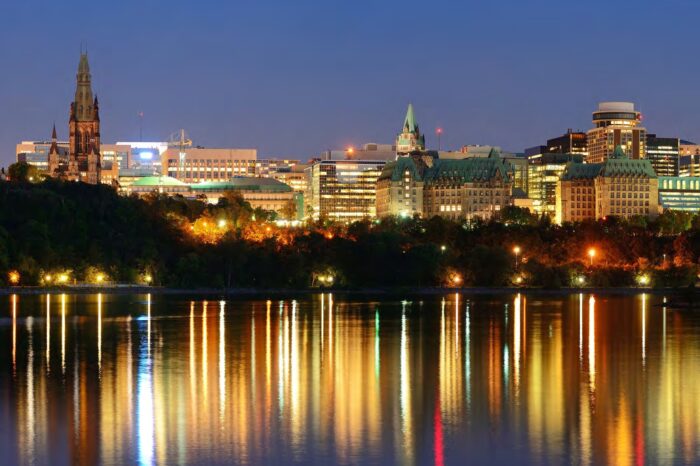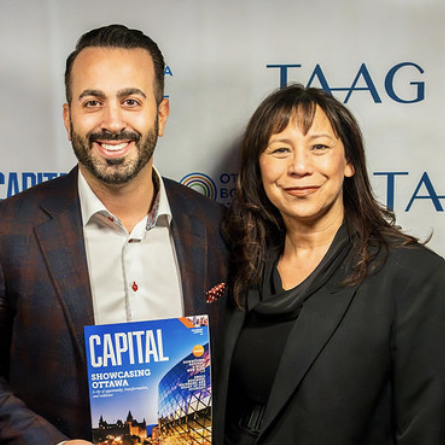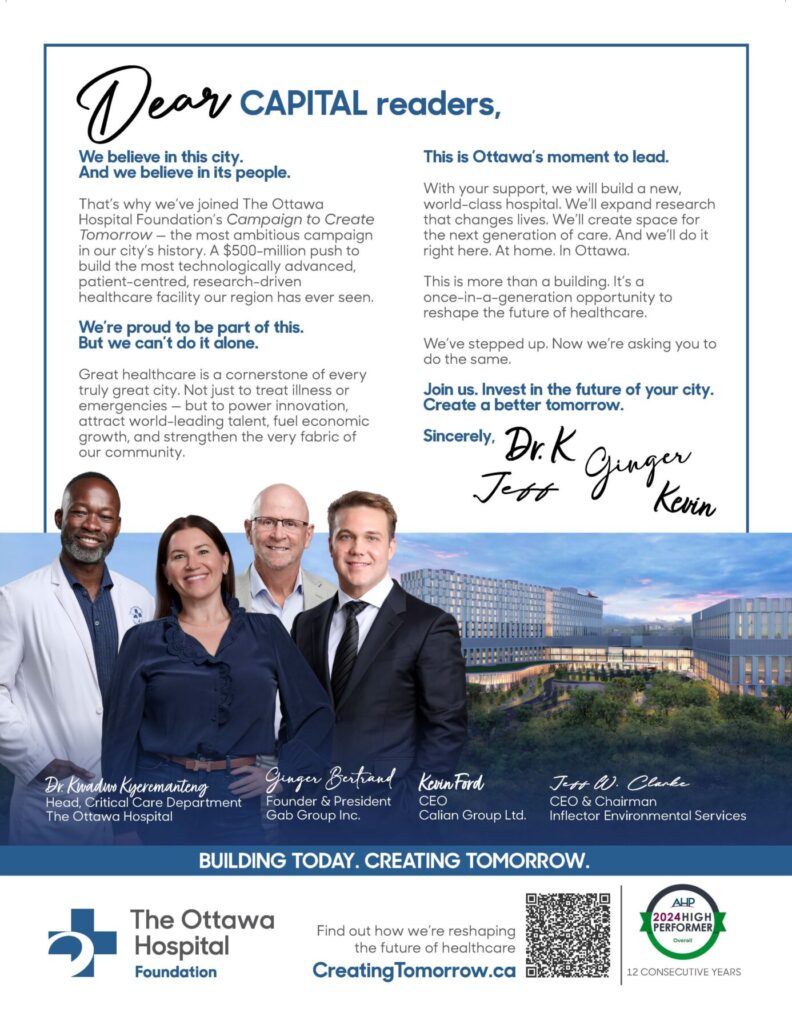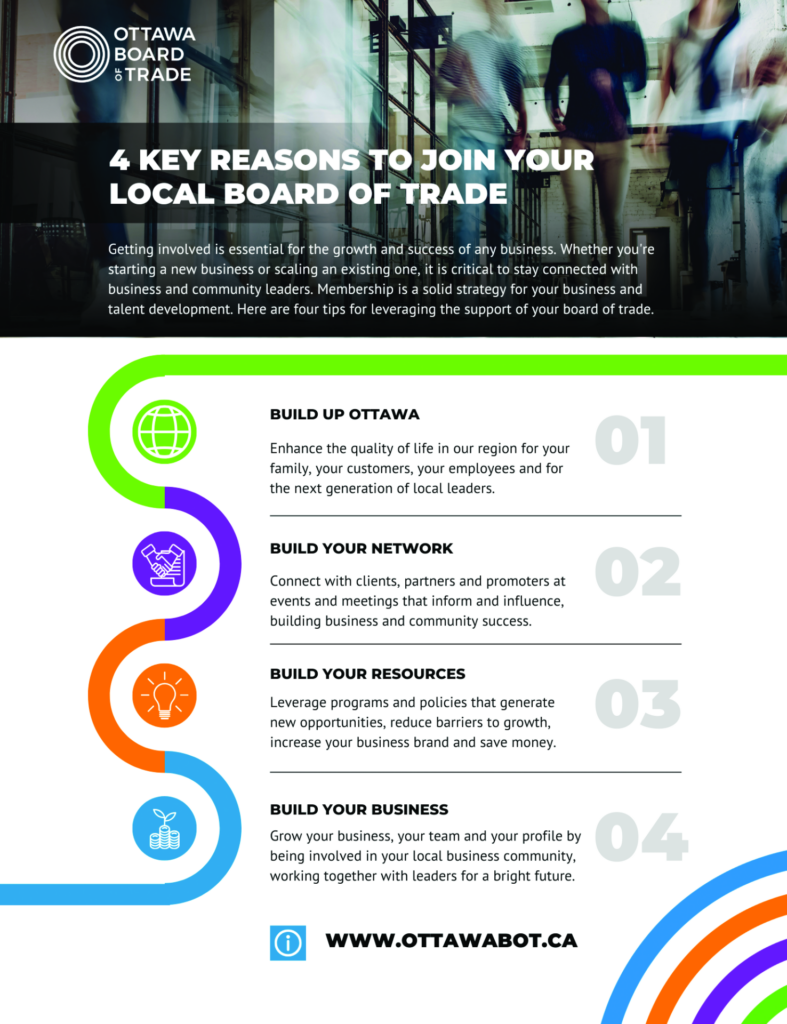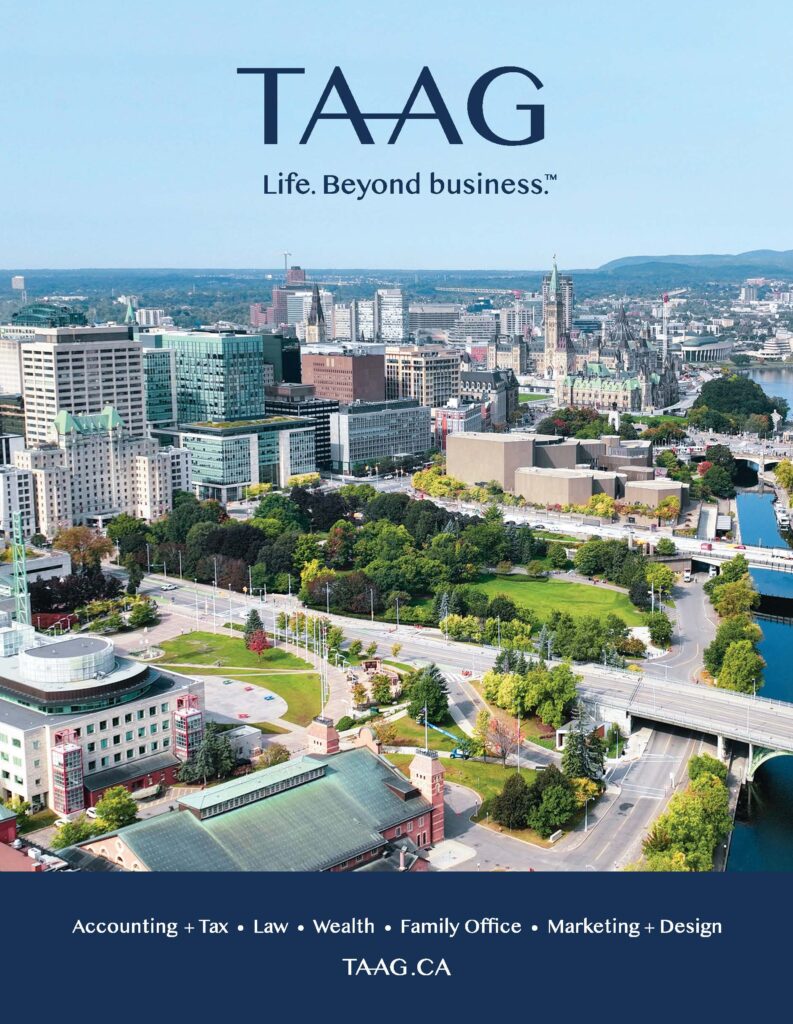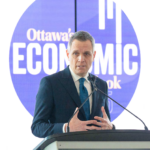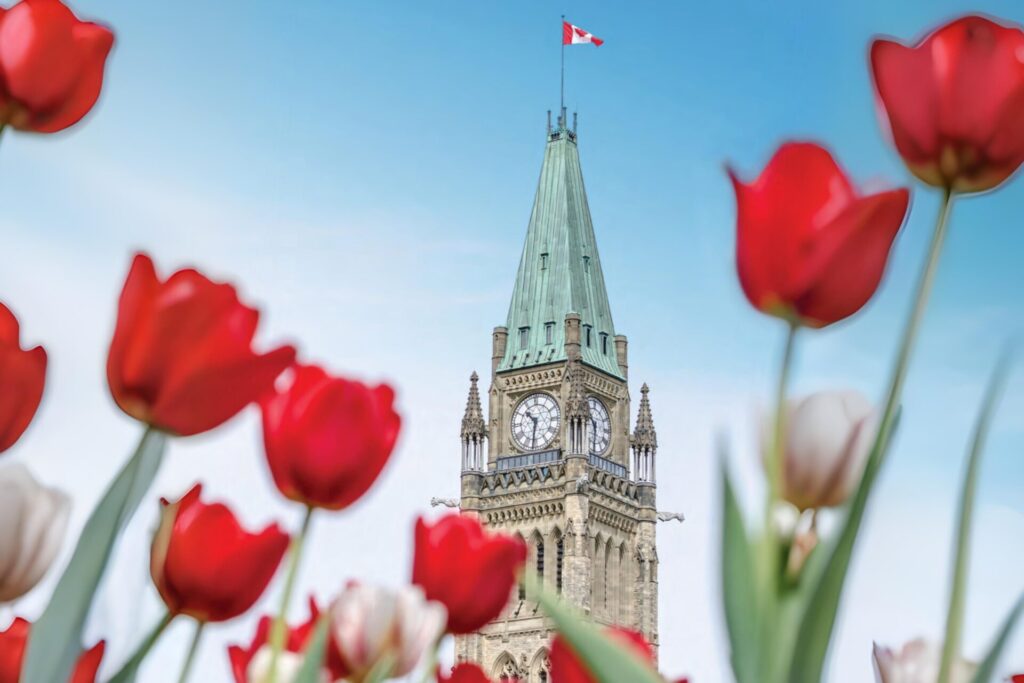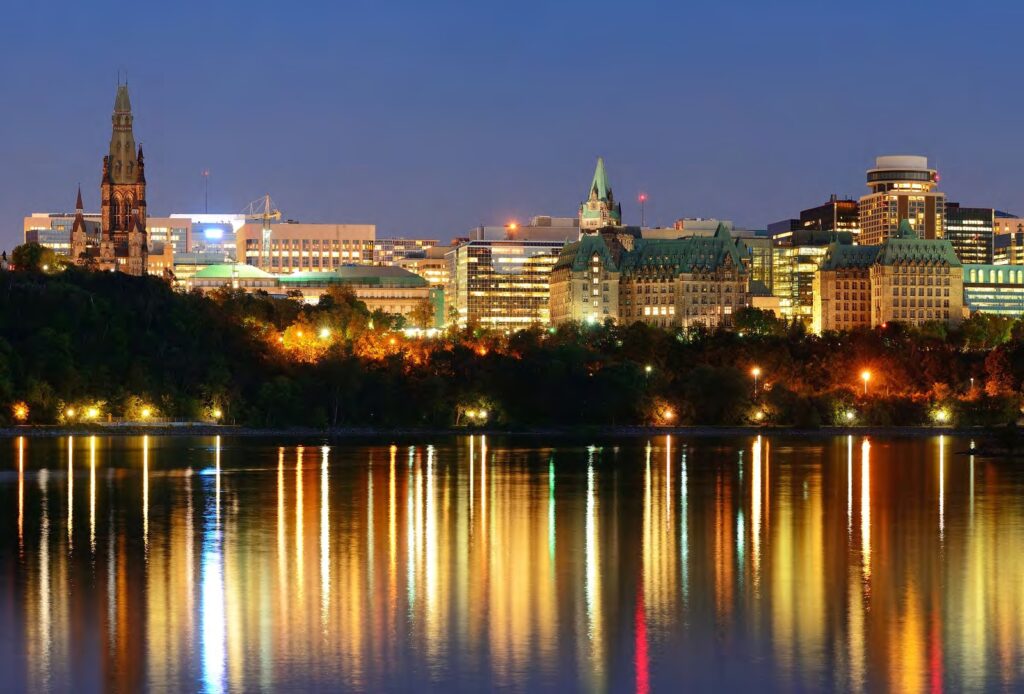‘That’s the way we do it in Ottawa’
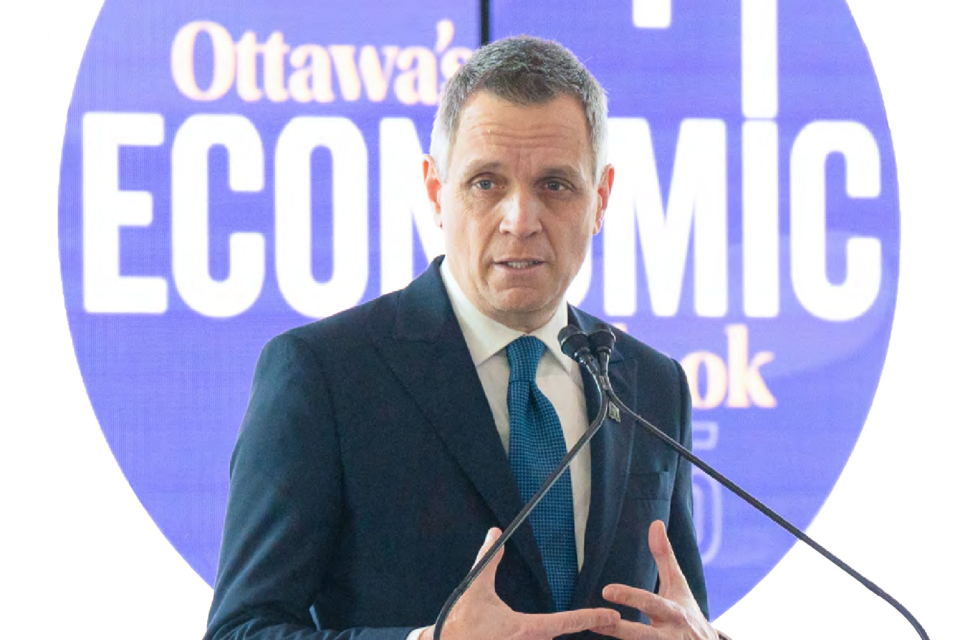
BY JENNIFER CAMPBELL
IN HIS 2025 State of the City address, Ottawa Mayor Mark Sutcliffe repeated one phrase several times: “That’s the way we do it in Ottawa.”
Each time, he was discussing how the community pulled together and found a solution to a problem. First, it was in the mid-1990s, when there were thousands of federal job cuts that decimated the city’s economy. Then it was the Board of Trade’s post- COVID plan to rebuild downtown Ottawa. He then referenced the 1970 story of then-mayor Marion Dewar’s “Project 4,000,” which welcomed 4,000 Vietnamese refugees to the city, a laudable 50 percent of the 8,000 Canada accepted. And finally, it was the city’s embrace of Syrians and Ukrainians escaping war. “That’s the way we do things in Ottawa,” he said again.

Presenting at the Ottawa’s Economic Outlook event are, left to right, Sueling Ching, president and CEO of the Ottawa Board of Trade; Allison Gifford, vice-president at Clear Strategy; Catherine Fortin Lefaivre, vice-president at the Canadian Chamber of Commerce; and Dawn Desjardins, chief economist
at Deloitte Canada
With respect to the need to invest more in Lansdowne Park, he said sports organizations that organize such events as the World Junior Hockey Championships or the Canadian Curling Championships want to return to the city but won’t unless it updates its aging infrastructure.
“There’s only one way we’re going to respond to the challenges and capitalize on the opportunities,” Sutcliffe said. “That’s with a strong, stable, balanced approach where we bring people together. That’s the way we do things in Ottawa.”
He finished his speech with a unifying message: “Let’s never underestimate the value of bringing people together even while others are trying to drive people apart,” he told those assembled. “Let’s continue to strike the right balance between supporting economic growth and showing compassion for our most vulnerable residents. Because that’s the way we do things in Ottawa.”

Mayor Mark Sutcliffe speaks to the media after his State of the City address on Jan. 21, the day after U.S. President Donald Trump’s inauguration. Photo: OBOT
A Beautiful City
The mayor kicked off his speech by talking about what a great place Ottawans live in.
“We have a wonderful community with so many terrific leaders, including many people in this room today, who care about our city, who support the most vulnerable, who invest their time in building a better future,” he said, adding that the city is naturally beautiful, with great restaurants, museums, galleries and cultural opportunities, including the growing music scene as well as strong economic drivers including the government, technology and tourism sectors.
“I know you know all this, but I think it’s all worth repeating,” he said.
Not Without Challenges
That said, Ottawa is not without its challenges and the mayor promised to speak candidly about them in his address. One of his major challenges has been the public transit file, specifically light rail about which he admitted there’s still “a long way to go.” But the mayor said there has been progress, especially with the new Trillium Line.
Also on the transportation file, an important collaboration between the City, Ottawa Tourism and the Ottawa Airport has meant the city is rebuilding its direct flight offerings after they were decimated in the pandemic.
“This is something I hear about a lot from the business community,” the mayor said. “The Air France flight to Paris has been a great success. [Air France has] upgraded the size of the aircraft and increased the number of flights per week.”
At the time of his address, he was also eagerly awaiting the resumption of Air Canada’s direct flights to London’s Heathrow Airport, which began March 31.
“So we’re making progress and we have a lot to look forward to,” he said.
Co-operation with Ottawa Tourism also resulted in hosting important events such as the World Juniors Ice Hockey Championships in December and January and Ottawa’s first Ironman competition in August of this year.
Downtown Core Woes
The mayor said he didn’t want to be “dramatic,” but that he would call some of the challenges the city faces historic. “I’ll be honest with you: I worry a lot about the future of downtown and the ByWard Market.”
He noted that the federal government has already announced its intention to reduce its downtown office space by 50 percent.
“That’s never happened before in our city,” he said. “Even though there are more people downtown since the return-to-office moves by the federal government in September, we’re still not back to pre- pandemic levels. It’s going to take years for a full recovery, and we can no longer count on federal government employees to fill that gap.”
His solution? To work together as a community to get more people living downtown and more attractions downtown to tempt the rural and suburban dwellers to come to the city core.
“We also need to see more collaboration between the city and the federal government so that any surplus federal properties are used strategically,” he said. “Let’s get everybody working together to figure out the best use for these buildings.”
Sutcliffe noted that he thinks the federal government has a responsibility as the No. 1 employer and the No. 1 property owner in the city to work with the City on a plan.
“I’m going to work with city staff to make sure that happens,” he said.
Economic Uncertainty
The mayor addressed the elephant in the room, speaking, as he was, the day after the inauguration of U.S. President Donald Trump.
“Yesterday, as you know, President Trump talked about imposing tariffs on Canada within a couple of weeks,” Sutcliffe said, anticipating the trade war that the two countries now find themselves in.
“And, we are starting to hear talk of job cuts in the federal public service,” he said. “That’s a huge threat to our local economy and we need to be ready for it.”
Being “ready for it” means spurring growth in the private sector to offset the setbacks in the public one, he said.
“We must continue to diversify our economy, to support entrepreneurship, to grow more companies and create more jobs,” he said. “Economic growth is vitally important for our future. Because economic growth is what drives progress for all our residents. It’s what generates the resources we need to face all of our challenges, including and especially supporting the most vulnerable.”
Supporting the Vulnerable and Rebuilding the Core
The mayor noted that the number of vulnerable people in Ottawa is growing.
“The number of people who are homeless, who are suffering from the opioid crisis or are facing mental illness, is growing,” he said.
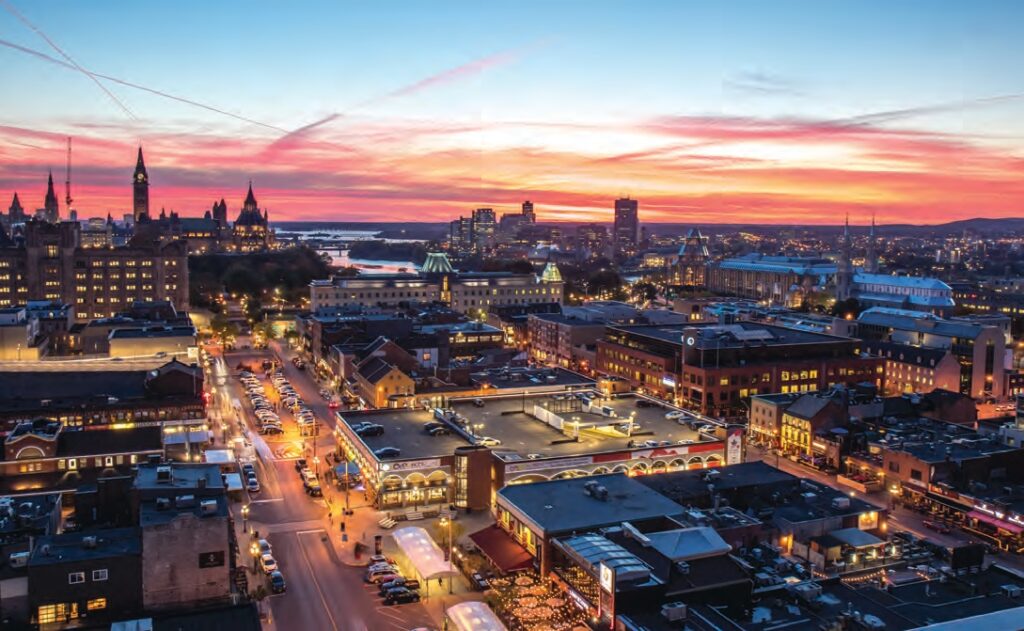
Mayor Mark Sutcliffe says he “worries a lot” about the future of downtown Ottawa and the ByWard Market. Photo: Harley D.

Mayor Sutcliffe noted that the city has put $10 million toward the William Street renewal, which connects to the ByWard Market building. Photo: Harley D.
“And that has a big impact on downtown and the ByWard Market and our entire city.”
He said the City has been working hard with other levels of government to get some help. It’s putting more money into social services and public safety in the city centre.
“In our most recent budget, we added $30 million that will be distributed to a number of agencies that support the most vulnerable,” he said. “We put more money toward food security as well.”

The Ottawa Board of Trade, Ottawa Tourism and Invest Ottawa—whose president and CEO Sonya Shorey is pictured here—have partnered in an initiative called Ottawa Unlimited. Photo: Invest Ottawa
Part of the solution will be working to implement the Ottawa Board of Trade’s plan for downtown Ottawa. He said the City will hire more than 100 new police officers, paramedics and firefighters and will invest more than $100 million on repairing roads, sidewalks and other critical infrastructure. It is also building a new Riverside South Community Centre and Recreation Complex and refurbishing the Alexander Community Centre, while investing in a new Barrhaven Town Centre civic complex and putting $10 million toward the William Street renewal project in the ByWard Market. To address the housing crisis, the City, which doesn’t build the houses but has to approve the projects, struck a task force to work to streamline this process and he added that the city secured millions through the Housing Accelerator Fund and the Build Faster Fund and 1,200 new affordable units will be ready in 2027.
On the affordability front, the mayor said he was proud that Ottawa has had the lowest tax increases of any major city in Canada, with the average increase over the past three years at less than 3 percent. The City has also found more than $207 million in savings and efficiencies over the past two years, which is a 10.5 percent tax increase that wasn’t passed on to residents.
Collaboration is Key
The mayor said he’s been watching this city closely, ever since he helped found the Ottawa Business Journal 30 years ago.
“I can tell you that at no other time in the past 30 years has there been as much collaboration and co-ordination among the business and economic development agencies in our city,” he said. “We are led by some terrific people at some very significant
organizations, including the Ottawa Board of Trade, Invest Ottawa, Ottawa Tourism, Regroupement des gens d’affaires, the Kanata North Business Association, the Ottawa Coalition of BIAs, all of our post-secondary institutions and more.” He referred to an historic partnership between the Ottawa Board of Trade, Invest Ottawa and Ottawa Tourism called Ottawa Unlimited.
“I was very proud and impressed to see this new level of collaboration around a shared vision and I’m excited to see the results. There is great teamwork happening right now and it’s very timely because we’re going to need it in the months and years ahead.”
